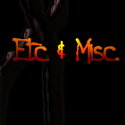|
|
|
Think
it's a Migraine? You Need to Know for Sure
Types and
descriptions of headaches
Ok, I see people all the time mention that they have "migraine" headaches, but most often, I know they are misinformed. I want to clarify the differences here for people since migraine is a specific, medical
diagnosis and different in origin and nature from other types of headaches. Take a look at the causes and symptoms of the following common headache types. For example, even the most common Tension headaches cause a level of light sensitivity. It's very vital you know
by a doctor's diagnosis what type you suffer from.
Tension-Type
Headaches
Tension-type headache (also called muscle contraction headache) is the most common of all headaches. It is often experienced in the forehead, in the back of the head and neck, or in both regions; it is described as a tight feeling, as if the head were in a vise. Soreness in the shoulders or neck is common. Tension-type headaches do not cause nausea or limit activities as migraine headaches do, although depression, anxiety, and sleeping problems may accompany persistent headaches. Tension-type headache sufferers are more sensitive to light than the general population, even between attacks, although not as severely as migraine sufferers are. They also may suffer from visual disturbances. Tension-type headaches can last minutes to days. In some cases they become chronic and may occur even daily in some sufferers.
Acute Migraine
A typical migraine attack produces throbbing pain on one side of the head, often accompanied by nausea, sometimes with vomiting; visual symptoms are common, and facial tingling or numbness may occur. Pain sometimes spreads to affect the entire head and is worsened by physical activity. Extreme sensitivity to light and noise are common, and patients may feel cold and look pale. Up to half of migraine sufferers have preheadache sensory and visual disturbances called auras.
Chronic Daily Migraines (Transformed
Migraine)
In some cases, migraines evolve into chronic, daily headaches, sometimes called transformed migraines. Such headaches resemble tension-type headaches but are more likely to be accompanied by gastrointestinal distress and mental or visual disturbances and to be affected by menstrual cycles.
Sinus
Headaches
Acute sinus headaches can occur in the front of the face, usually around the eyes, across the cheeks, or over the forehead. They are usually mild in the morning and increase during the day, and are typically accompanied by fever, runny nose, congestion, and general debilitation. Sinus headaches tend to be more generalized than migraines, but it is often difficult to tell them apart; they even coexist in many cases. In rare cases, sinusitis can cause double vision and even vision loss, a sign of very serious infection. Chronic sinusitis can cause a mild to moderate general headache.
Headache Due to Neck
Problems
Some headaches may be caused by abnormalities of the neck muscles resulting from prolonged poor posture (such as that caused by sitting in front of a computer keyboard or driving daily for long periods), arthritis, injuries of the upper spine, or abnormalities in the cervical spine (the spinal bones in the neck). Nerves in the neck converge in the trigeminal nerve in the face and can generate pain signals that the brain may interpret as headache. Pain is usually on one side; even if it affects both sides of the head it is usually more severe on one side. The quality of the headache may be similar to an aching tension-type headache or a mild migraine without auras.
Temporomandibular Joint Dysfunction
(TMJ)
TMJ is caused by clenching the jaws or grinding the teeth (called bruxism) or by abnormalities in the jaw joints themselves. Because these actions usually happen during sleep, most people wake up with these headaches. The diagnosis is easy if chewing produces pain or if jaw motion is restricted or noisy. TMJ pain can occur in the ear, cheek, temples, neck, or shoulders.
Neuralgia
Neuralgia is pain due to nerve abnormalities, which can occur in the facial area and resemble migraine or sinus headaches. Neuralgia at the back of the head, called occipital neuralgia, may also cause headache as well as ringing in the ear, visual disturbances, and abnormal sensations in the scalp.
Transformed
Migraines
Transformed migraines resemble tension-type headaches but are more likely to be accompanied by gastrointestinal distress and mental or visual disturbances and to be affected by menstrual cycles. They are often confused with rebound headache, since one evolves from migraines.
Rebound
Headache
Symptoms of chronic headache caused by withdrawal from caffeine or headache medications often occur in the morning upon waking up. Tracking any triggers and times of medications and withdrawal is helpful in differentiating from other types, such as transformed migraine. Rebound headaches are usually more variable in severity and location and are more sensitive to triggers than transformed migraines.
Source: http://my.webmd.com/content/article/1680.52476
In Summary
It is VERY important that you see a doctor if you are experiencing severe or
persistent headaches. You must be diagnosed as a migraine sufferer before you take
migraine-specific medications such as Imotrex or Midrin. Migraine medications work by restricting blood flow to the brain. THIS IS DANGEROUS and can cause STROKE. Please be sure your type of headache is assessed by a medical doctor prior to beginning any medication. Never take someone else's prescription either. Learn what causes your type of headache and avoid those triggers.
It's not always migraines people - especially in men. Over 85% of migraine sufferers over the age of 18 are
women. See the doctor before you decide you know it's a migraine.
Additional sources on headaches will follow in a comprehensive article on the site, or you can refer to this article here:
http://my.webmd.com/content/article/1680.51343
|







